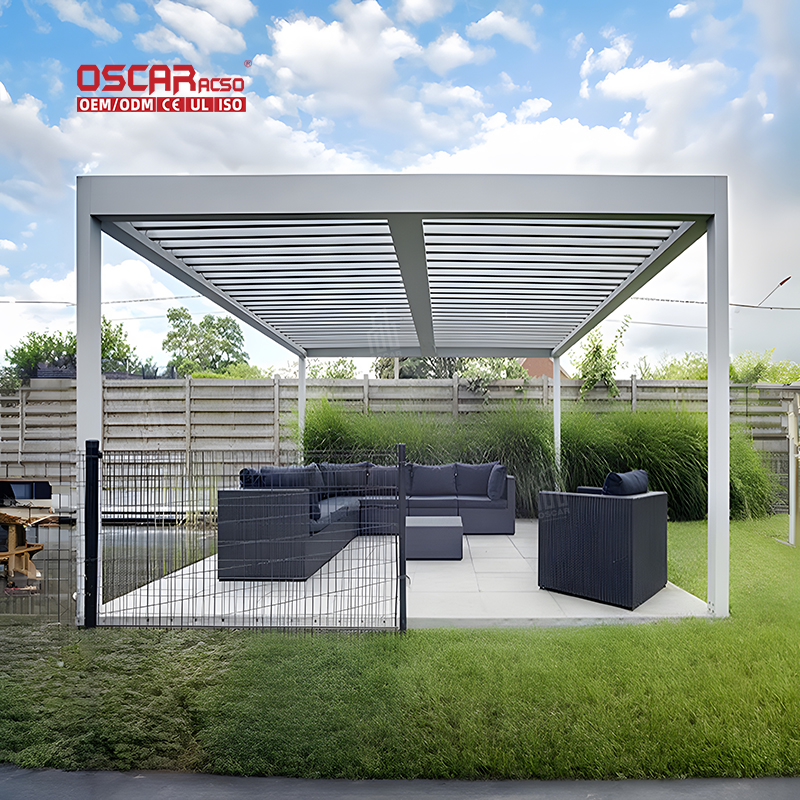Pergola Wobble, Unlocking the Secrets to a Rock-Solid Structure
That slight shake in your pergola when the wind picks up might seem minor, but it’s your structure’s way of asking for h...

That slight shake in your パーゴラ when the wind picks up might seem minor, but it’s your structure’s way of asking for help. A wobbly pergola is more than a nuisance; it’s a symptom of an underlying issue that needs attention 🤔.
.jpg)
🔍 The Root Causes of the Shakes
So, why does your pergola wobble? The answer lies in its foundation, bones, and joints. A properly installed pergola should not wobble. If it does, it often points to insecure anchoring, inadequate materials, or compromised structural integrity over time .
- •
Inadequate Foundation: The number one culprit. If the posts aren’t sunk deep enough into solid concrete footings, the entire structure can shift and sway, especially in soft soil .
- •
Undersized Materials: Using 4×4 posts might save money initially, but they often lack the strength to resist flexing under wind or weight, leading to instability .
- •
Loose Connections & Hardware: Over time, bolts and screws can loosen. Using nails instead of proper hardware from the start is a common mistake that accelerates this problem .
- •
Missing Diagonal Bracing: Without cross-bracing or knee braces, your pergola has no defense against lateral (side-to-side) forces, making it vulnerable to even gentle pushes .
- •
Environmental Assault: relentless sun, heavy rain, snow, and wind slowly degrade materials. Wood can rot and weaken, while metal fittings can corrode, compromising joint strength .

🛠️ Your Step-by-Step Fix-It Guide
Fixing a wobbly pergola is about methodically addressing each potential weakness.
1. Foundation First: Secure the Base
Everything starts from the ground up. For a permanent fix, digging out around the posts and pouring concrete footings is the most effective method to prevent shifting and rotting . Ensure posts are set at least 24-36 inches deep for maximum stability .
2. Material Upgrade: Go Bigger and Stronger
If your posts are skinny or weak, consider an upgrade. Opt for 6×6 or even 8×8 posts for larger pergolas instead of standard 4x4s. Choose high-quality, weather-resistant materials like pressure-treated wood, cedar, or aluminum for longevity .
3. Add Bracing: The Ultimate Stabilizer
Introducing diagonal support is a game-changer. Install knee braces at 45-degree angles between posts and beams, or use cross braces that create an ‘X’ pattern between posts for maximum strength against swaying .
4. Tighten and Reinforce: Check Every Joint
Grab your wrench and inspect all bolts, screws, and metal brackets. Tighten every connection. If hardware is rusted or weak, replace it with heavy-duty, galvanized options to ensure a solid frame .
5. clever Hacks for Immediate Relief
For a quick temporary fix or in areas where digging isn’t ideal, consider:
- •
Guy Wires: Stainless steel cables anchored to the ground can provide excellent lateral stability, especially in windy areas .
- •
Weighted Bases: Large planters filled with gravel or concrete can add ballast and reduce movement .
🛡️ Prevention: Build to Last
Stopping wobble before it starts is the best strategy.
- •
Design for Stability: Choose a design that incorporates bracing and uses appropriate post sizes from the outset. A well-planned structure is a stable one .

- •
Routine Maintenance is Key: Schedule an annual inspection of your pergola. Tighten all bolts, check for wood rot or pest damage, and apply a fresh sealant to wooden surfaces every few years to protect against the elements .
- •
Mind the Load: Be cautious about what you add to your pergola. Heavy climbing vines, swing chairs, or dense shade cloths can add significant stress. Ensure your structure is designed to handle the extra weight .
A little wobble might seem harmless, but addressing it protects your investment and ensures your outdoor sanctuary remains a safe haven for years of enjoyment ☀️.
.jpg)

.jpg)
